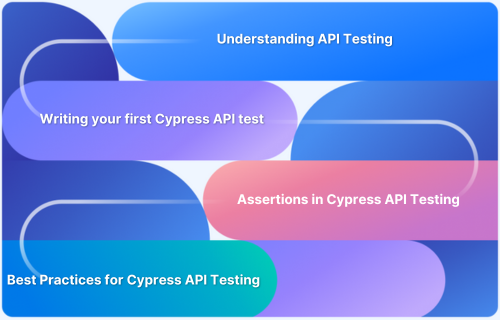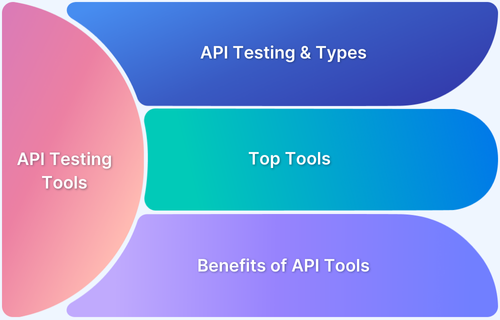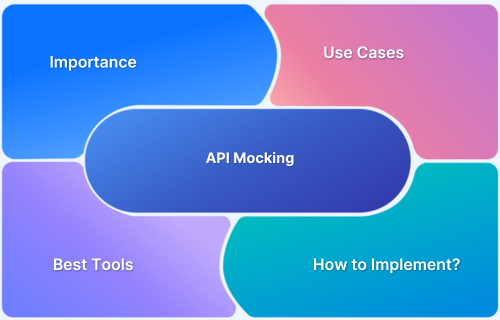As applications grow in complexity, managing efficient data fetching and handling large datasets can become challenging. Traditional REST APIs often struggle with over-fetching or under-fetching data, and maintaining consistency across databases can be cumbersome. GraphQL with MongoDB addresses these issues by offering a flexible querying system.
Overview
Integrating GraphQL with MongoDB helps building flexible and scalable APIs. This combination allows developers to leverage GraphQL’s efficient query capabilities with MongoDB’s flexible, schema-less data structure, offering a seamless way to handle complex data interactions and real-time updates.
Benefits of Integrating GraphQL with MongoDB
- Efficient Data Fetching: GraphQL allows clients to request exactly the data they need, reducing over-fetching and under-fetching.
- Flexible Schema: MongoDB’s schema-less design complements GraphQL’s dynamic query capabilities, making it easy to handle changing data structures.
- Real-time Updates: Leverage GraphQL subscriptions for real-time data updates, paired with MongoDB’s scalability.
- Improved Query Performance: GraphQL’s ability to batch and optimize queries minimizes unnecessary database calls.
- Scalability: MongoDB’s flexible, horizontal scalability fits well with the evolving nature of GraphQL APIs.
- Reduced Overhead: Simplified server-side logic by combining GraphQL’s query language with MongoDB’s powerful database features.
This article explores the benefits and implementation of integrating GraphQL with MongoDB to build scalable, efficient APIs that streamline data fetching and management.
Understanding GraphQL and MongoDB
GraphQL is a query language for APIs that allows clients to request exactly the data they need, eliminating the issues of over-fetching or under-fetching that are common with traditional REST APIs.
It provides a flexible and efficient way to interact with backend systems, enabling developers to specify queries, mutations, and subscriptions in a declarative manner.
MongoDB, on the other hand, is a NoSQL database known for its flexibility, scalability, and ease of use. Unlike relational databases, MongoDB stores data in a JSON-like format, which allows for schema-less data storage and dynamic data structures.
This is particularly useful for applications that require rapid iteration or deal with complex and changing data.
When combined, GraphQL and MongoDB create a powerful backend solution that can handle complex, dynamic data models while providing efficient and flexible API querying.
GraphQL serves as a unified interface to access MongoDB’s data, allowing developers to retrieve exactly what they need with minimal overhead. This integration supports real-time data updates, optimized queries, and a scalable architecture for growing applications.
Setting Up the Development Environment
Start by preparing your development environment with the necessary tools for integrating GraphQL with MongoDB. The typical stack includes Node.js for the server, Express for routing, GraphQL for API design, and Mongoose for managing MongoDB connections.
- Node.js & npm: Ensure that Node.js and npm are installed to manage dependencies and run the server.
- MongoDB: Set up a local MongoDB instance or use MongoDB Atlas for a cloud-based solution to store and query data.
- Required Libraries: Install essential libraries such as Express for the application framework, Apollo Server for GraphQL integration, and Mongoose for MongoDB object modeling using npm or yarn.
- Project Initialization: Initialize your project directory with npm init or yarn init, then install the necessary dependencies to set up the backend development environment.
This setup creates a strong foundation for building a flexible, scalable, and efficient GraphQL API that interacts seamlessly with MongoDB.
Defining the MongoDB Schema with Mongoose
Mongoose provides a robust, schema-based solution for defining the structure of documents within a MongoDB collection. By using schemas, you can enforce rules like field types, validation, default values, and other constraints that ensure data consistency and integrity when interacting with MongoDB.
To define a schema in Mongoose, you use the Schema constructor and specify the fields along with their respective properties. Each field can be assigned a data type, validation rule, default value, or even set as required. For example, here’s how you would define a schema for a User model:
const mongoose = require('mongoose');
const userSchema = new mongoose.Schema({
name: { type: String, required: true }, // Ensures the name is provided
email: { type: String, unique: true, lowercase: true }, // Ensures the email is unique and in lowercase
age: { type: Number, min: 18 }, // Ensures the age is at least 18
createdAt: { type: Date, default: Date.now }, // Automatically sets the current date if not provided
});In this example:
- name: A required field of type String.
- email: A String field that is unique and automatically converted to lowercase.
- age: A Number field with a minimum value of 18.
- createdAt: A Date field that defaults to the current date if not provided.
After defining the schema, the next step is to create a model using mongoose.model(). The model acts as an interface for performing CRUD (Create, Read, Update, Delete) operations on the corresponding MongoDB collection.
const User = mongoose.model('User', userSchema);This User model can now be used to interact with the users collection in MongoDB. Mongoose’s built-in methods allow you to easily query, modify, and manage data within your MongoDB database while maintaining the integrity and structure defined in your schema.
By using Mongoose and defining a schema, developers can ensure their data is well-structured, validated, and consistent across their application, reducing errors and improving overall data management.
Building the GraphQL Schema
Building a GraphQL schema involves defining types, queries, and mutations that dictate how data can be queried and modified.
1. Defining Types: Types represent the structure of your data. For example, a Book type might include fields like id, title, and author.
type Book {
id: ID!
title: String!
author: String!
}2. Defining Queries: Queries fetch data. For example, a query to get a list of books could be defined as:
type Query {
books: [Book]
book(id: ID!): Book
}3. Defining Mutations: Mutations modify data. For example, a mutation to add a new book might look like this:
type Mutation {
addBook(title: String!, author: String!): Book
}4. Resolvers: Resolvers define how the data is fetched for each query or mutation. They connect the schema with your data sources.
By defining the schema and resolvers, you create a structured, flexible GraphQL API that can efficiently manage data interactions.
Integrating GraphQL with MongoDB
Integrating GraphQL with MongoDB allows you to efficiently manage and query data while leveraging GraphQL’s flexible API structure.
1. Set Up MongoDB Connection: Use Mongoose or the native MongoDB driver to establish a connection to your MongoDB database. For example, using Mongoose:
const mongoose = require('mongoose');
mongoose.connect('mongodb://localhost:27017/graphql-demo', {
useNewUrlParser: true,
useUnifiedTopology: true,
}).then(() => console.log('Connected to MongoDB'))
.catch(err => console.error('MongoDB connection error:', err));2. Define Your GraphQL Schema: Create a schema defining types, queries, and mutations that map to your MongoDB data model. For instance, defining a User type with queries to fetch users and mutation to create new users.
3. Implement Resolvers: Resolvers contain the logic to fetch data from MongoDB or update it. Using Mongoose, a resolver for fetching all users would look like:
const resolvers = {
Query: {
getAllUsers: async () => {
return await UserModel.find();
}
},
Mutation: {
createUser: async (_, { name, email }) => {
const user = new UserModel({ name, email });
return await user.save();
}
}
};4. Start the GraphQL Server: Use a server library like Apollo Server or express-graphql to serve your schema and resolvers. For example, with express-graphql:
const express = require('express');
const { graphqlHTTP } = require('express-graphql');
const schema = require('./schema');
const resolvers = require('./resolvers');
const app = express();
app.use('/', graphqlHTTP({
schema: schema,
rootValue: resolvers,
graphiql: true,
}));
app.listen(4000, () => console.log('Server running on http://localhost:4000/'));This setup allows client applications to query and mutate data in MongoDB using GraphQL, taking advantage of GraphQL’s flexibility in specifying precisely what data is required, and MongoDB’s scalable, document-oriented storage. The combination leads to a powerful, efficient API design suited for modern applications.
Read More: Top 10 Python REST API Frameworks
Handling the Advanced Scenarios
When integrating GraphQL with MongoDB, several advanced scenarios need to be addressed for optimal performance and functionality.
- Pagination and Filtering: To avoid performance issues with large datasets, implement pagination and filtering. This ensures that only a subset of data is fetched, improving response times and reducing database load.
- Handling Nested Queries: For complex data relationships, use MongoDB’s population feature to handle nested queries efficiently. This allows you to fetch related data in a single query, reducing the number of database calls.
- Real-Time Data with Subscriptions: For real-time applications, GraphQL subscriptions enable automatic updates to clients whenever data changes. This is ideal for apps requiring live data updates like messaging or live feeds.
- Optimizing Query Performance: Optimize GraphQL queries by batching requests, using MongoDB indexing, and employing tools like DataLoader to prevent the N+1 query problem, ensuring efficient data fetching.
- Error Handling and Data Integrity: Ensure proper error handling to provide clear feedback for issues like invalid data or network failures. Enforce data integrity through validation rules in both MongoDB and GraphQL schemas to maintain consistency.
- Managing Relationships Between Data: Efficiently manage relationships between MongoDB collections using references. Design these relationships carefully to avoid performance issues and ensure fast data retrieval.
By addressing these advanced scenarios, you can ensure that your GraphQL-MongoDB integration remains scalable, efficient, and responsive.
Best Practices for Deployment
To ensure smooth deployment of your GraphQL and MongoDB integration, follow these best practices:
- Environment Configuration: Use environment variables to store sensitive data like database connection strings, API keys, and other configurations.
- Performance Optimization: Enable database indexing for frequently queried fields to speed up lookups. Implement pagination and filtering in GraphQL queries to prevent performance bottlenecks with large datasets.
- Secure Your API: Implement authentication and authorization mechanisms, such as JWT or OAuth, to secure your GraphQL endpoints and protect sensitive data. Ensure role-based access control for fine-grained permissions.
- Scalability: Deploy your application on scalable cloud platforms. Use managed services like MongoDB Atlas for auto-scaling and easier database management.
- Monitoring and Logging: Set up monitoring to track application performance. Implement centralized logging to help debug issues in production.
- Continuous Integration and Deployment (CI/CD): Automate testing and deployment with CI/CD pipelines (e.g., GitHub Actions, Jenkins) to ensure smooth, error-free deployments and frequent releases.
Enhance API Testing and Debugging with Requestly HTTP Interceptor
Requestly HTTP Interceptor is a valuable tool for improving the efficiency of API testing and debugging by allowing you to intercept, modify, and mock HTTP requests and responses in real-time. This tool is particularly useful when integrating GraphQL with MongoDB, as it helps simulate various scenarios and identify issues early in the development process.
- Mock API Responses: Simulate server conditions (e.g., errors, slow responses) to test how your GraphQL API handles different scenarios.
- Modify Requests and Responses: Intercept and modify query parameters, headers, or response bodies to test edge cases.
- Simulate Network Conditions: Test API behavior under different network conditions like slow connections or timeouts.
- Debugging API Issues: Inspect and troubleshoot requests and responses to quickly identify and fix bugs.
- Version Control for API Changes: Simulate different API versions to test backward compatibility without altering the backend.
Try Requestly HTTP Interceptor Now
Requestly streamlines API testing, allowing developers to simulate real-world conditions and improve the reliability of GraphQL-MongoDB integrations.
Conclusion
Integrating GraphQL with MongoDB offers a powerful solution for building scalable and efficient APIs. By following best practices for schema design, query optimization, and error handling, developers can ensure smooth, high-performance interactions between GraphQL and MongoDB.
Leveraging tools like Requestly HTTP Interceptor further enhances the testing and debugging process, allowing for real-time simulation, modification, and monitoring of API requests. With these strategies and tools in place, developers can create robust and reliable applications while minimizing downtime and improving overall efficiency.







